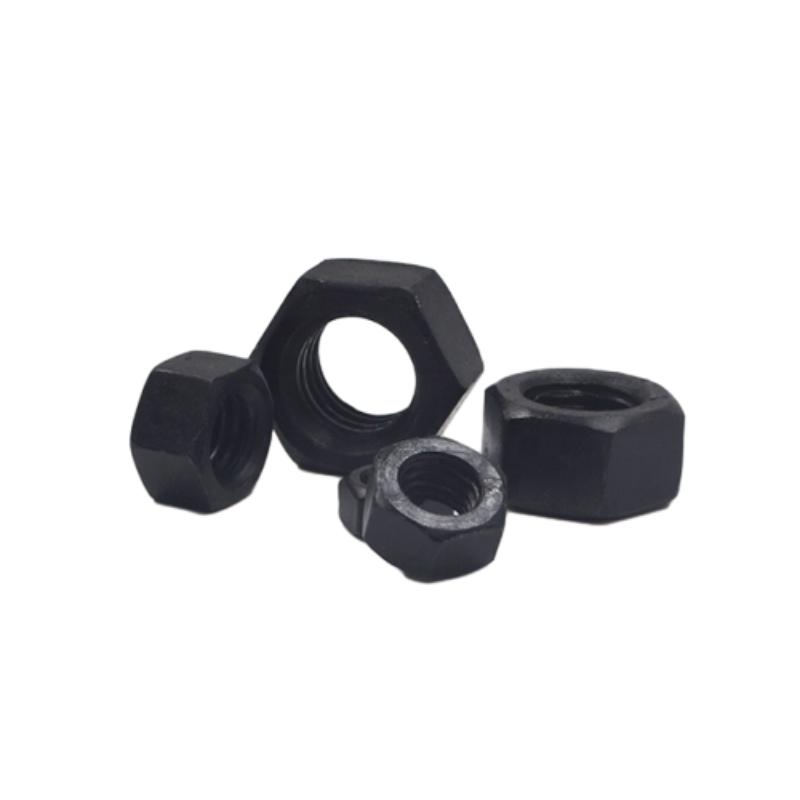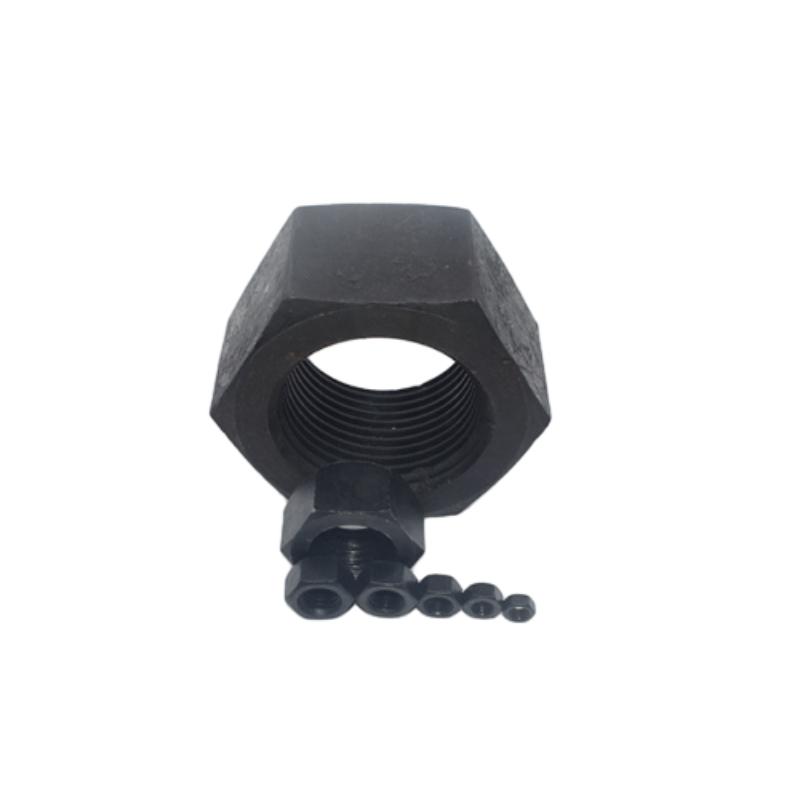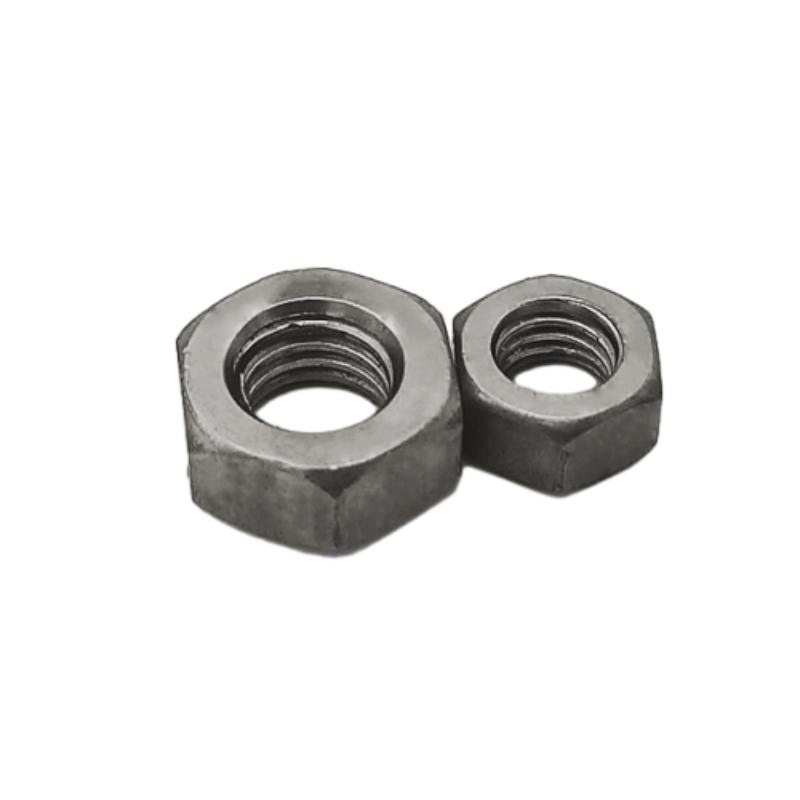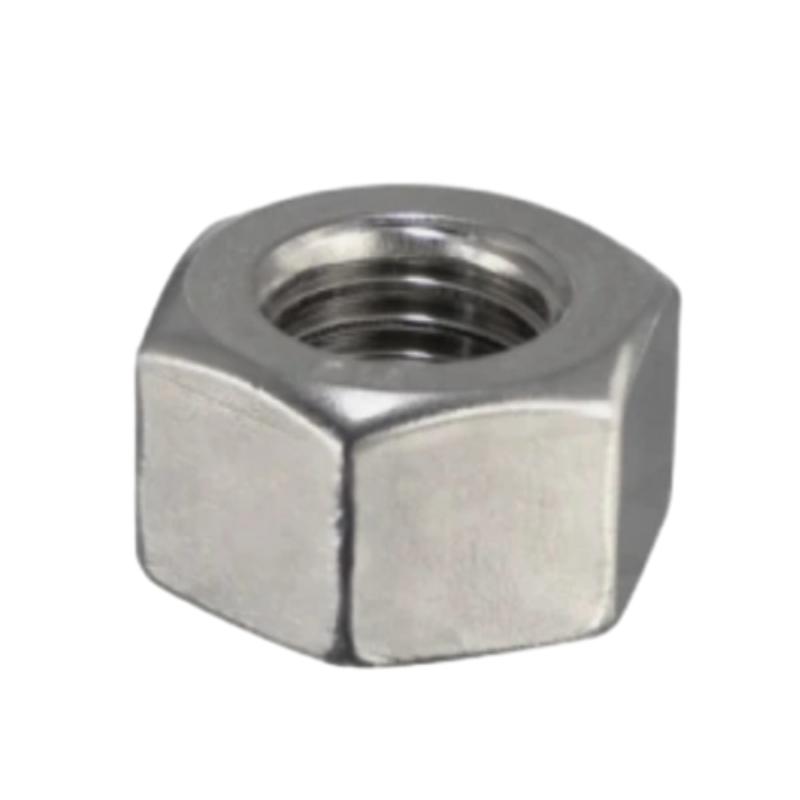Jul . 29, 2025 20:20 Back to list
High Quality Hex Nut – Various Sizes & Types for Industrial Use
Hex nuts are a foundational element in mechanical fastening systems across global industries. With decades of engineering evolution, hex nut standards and production technologies have transformed to deliver superior strength, corrosion protection, and reliability. In this comprehensive guide, we dive deep into hex nut sizes, international specifications, state-of-the-art manufacturing, and the technical/strategic factors that make modern hex nut offerings—like the DIN934 Carbon Steel Grade 4.8/8.8/10.9 Zinc/Plain/HDG M8-M20 Hex Nut—an industry standard for sectors including petrochemical, metallurgy, water infrastructure, and construction.

1. Industry Overview & Trends: The Ascendancy of the Hex Nut Family
The hex nut, also popularly known as the hexagon nut, forms the backbone of mechanical fasteners. With global fastener market values exceeding $95 billion USD in 2023 (source), demand for high-precision, high-strength hex nuts has surged—catalyzed by industrial automation, renewable energy, large-scale infrastructure, and tightening global standards (ISO, ANSI, DIN).
- Growth of nylock hex nut (nylon-insert) for vibration scenarios (railroads, automotive, machinery) — projected CAGR 8.4% through 2026
- Rapid move toward corrosion-resistant surface treatments: Zinc, HDG, and Dacromet
- Automation & digital production: Computerized (CNC) machining and real-time QC tracking
- Global migration to standardization: ISO 898–2, DIN 934, ANSI B18.2.2; facilitating cross-regional assembly
2. Key Parameters: Hex Nut Sizes, Dimensions, Types, and Specifications
The performance and compatibility of a hex nut hinges on correctly specified dimensions, thread pitches, strength grades, and surface finishes. Below is an at-a-glance table featuring typical specs for hex nuts in industrial use, including metrics for m12 nut size, m20 nut size, and 1 1 8 nut dimensions (inch system).
| Nut Type | Size (Thread) | Width Across Flats (mm/inch) | Thickness (mm/inch) | Standard | Material Grade | Coating |
|---|---|---|---|---|---|---|
| Hex Nut (Metric) | M12 | 18 mm | 10 mm | DIN 934 | 4.8/8.8/10.9 | Zinc/Plain/HDG |
| Hex Nut (Metric) | M20 | 30 mm | 16 mm | DIN 934 | 4.8/8.8/10.9 | Zinc/Plain/HDG |
| Hex Nut (Imperial) | 1 1/8” | 1.69” (43 mm) | 0.91” (23 mm) | ANSI B18.2.2 | Grade 2/5/8 | Zinc/Plain/HDG |
| Nylock Hex Nut | M16 | 24 mm | 13 mm | DIN 982/985 | 8/10 | Zinc/Black |
| Hex Nylock Nut | 1/2” | 3/4” (19 mm) | 13/32” (10.3 mm) | ANSI B18.16.6 | A2/A4 SS, 8 | Plain/HDG |
Note: Metric nut sizes refer to the thread diameter in millimeters (e.g., M12 = 12 mm thread). Width across flats is vital for correct wrench fit and tightening torque.

3. Unlocking Performance: Features & Technical Advantages of DIN934 Carbon Steel Hex Nut
- Material Grades: Available in Carbon Steel Grades 4.8, 8.8, 10.9 — engineered to meet ISO 898–2, DIN 934, and ANSI B18.2.2 for tensile/yield strength. Higher grades offer increased resistance to shearing and deformation in demanding joints.
- Surface Treatments: Choose among Zinc plated, Plain, or Hot Dip Galvanized (HDG) for targeted corrosion protection and durability — e.g., HDG providing up to 50–75 μm coating thickness for >500 hrs salt-spray life (ISO 9227).
- Precision Threads: Rolled and CNC-cut threads enhance fit, reduce galling risk, and ensure repeatable torque values. Metric (ISO), Unified (UNC, UNF), or special custom threads available.
- Advanced Inspection: 100% dimension and thread/geometry checks via automatic optical sorting; material certifications traceable by batch.
- Long Service Life: Proven up to 20 years in outdoor, corrosive environments when paired with the right coatings and installation per ISO/ANSI recommendations.
- Industry Deployment: Trusted by petrochemical plants, metallurgical refineries, tunnel & bridge construction, heavy equipment manufacturers, and critical water works.
4. Hex Nut Manufacturing Flow: An Illustrated Insight
A deep-dive into the manufacturing process of DIN934 Carbon Steel hex nut reveals the intersection of materials metallography, precision forming, and metrology:
(Material Selection) → Cold/Hot Forging
(Nut Blank Forming) → CNC Milling
(Hex Shaping) → Thread Tapping
(Internal Threading) → Surface Coating
(Zinc/HDG/Other) → Full Inspection
(ISO/ANSI Test) → Packing & Storage
The above video demonstrates the multi-step transformation from raw steel wire to tested, precision-packed hex nut.

5. Product Data Charts & Comparative Analysis (DIN934 Carbon Steel Hex Nut vs. Common Market Offers)
| Parameter | DIN934 Hex Nut (Grade 10.9, Zinc/HDG) |
Standard Market Hex Nut (Grade 8.8, Black) |
Stainless Nylock Nut (A2/A4-70) |
|---|---|---|---|
| Tensile Strength (MPa) | 1040–1220 | 800–900 | 700–800 |
| Yield Strength (MPa) | 940–1020 | 600–700 | 450–600 |
| Corrosion Resistance (Salt spray, h) | >500 (HDG) | 48–96 | >1000 |
| Thread Tolerance | Class 6H | Class 6H/6G | Class 6H |
| Service Life (Years) | 15–20 | 3–8 | 15–25 |
| Certified to | ISO 898–2, DIN 934 | DIN 934, GB/T41 | ISO 3506-2 |

6. Real-world Applications & Success Cases
- Petrochemical Facilities (Middle East, SE Asia): DIN934 hot dip galvanized hex nut deployed in piping assemblies sustaining temperature cycles, salt-laden winds, and chemical exposure. Five-year audit: Hex nut failure rate under 0.15% (vs. 1.2% generic).
- Metallurgical Smelters (Europe): Grade 10.9 hex nut used in furnace frames and support columns—demonstrating 18+ years of service with no thread galling and exceptional load retention.
- Water & Wastewater Infrastructure: Zinc/HDG hex nuts ensure reliable sealing and joineries—eliminating rust-spread risk in tunnels, pumping stations, and submerged connectors.
- Heavy Machine & Wind Turbine Foundations: Use of oversized m20 nut size—paired with certified anchor bolts—for critical load distribution.
- Customer Feedback (2023, EU): “Switching to DIN934 Carbon Steel Hex Nuts dropped annual fastener maintenance costs by 27%, and quality claims by 80%.”
7. Supplier Benchmark: DIN934 Carbon Steel Hex Nut vs. Other Leading Brands
| Supplier | Material & Grades | Certifications | Main Coatings | QC/Traceability | Custom Services | Delivery |
|---|---|---|---|---|---|---|
| YTBolt (Official) | Carbon Steel 4.8/8.8/10.9 | ISO, DIN, CE, SGS | Zinc, HDG, Black | Batch laser code, Online QC | OEM/Logo/Custom pack | 7~15 days (stocked); 30 days (custom) |
| HILTI | 8/10/12 (Special Alloy) | ISO, ETA, TUV | Dacromet, HDG | Trace code, ERP Tracking | Limited custom | 10–30 days |
| Fastenal | 2/5/8, 18-8/304/316SS | ANSI, ASTM | Zinc, Plain, SS | Bar code, spot-check | Logo, bulk pack | 10–35 days |
| Bumax | A4, A5 (SS) | ISO, NORSOK | Polish/SS | Serial trace, QC chart | See case | Est. 28–45 days |
For engineering-critical or highly customized large-diameter hex nuts (e.g., tower/bridge base, offshore platforms), top vendors—like YTBolt—provide enhanced metallurgy reports, in-line inspection, and 100% test certificates in compliance with ISO, ANSI, or regional directives.
8. Custom Solutions for Demanding Projects
YTBolt offers tailored hex nut solutions including:
- Non-standard hex nut dimension up to M48/2” diameter with pre-applied Dacromet, wax, or MoS₂ coating for installation ease
- Pre-assembled sets: Pairing with high-strength bolts and washers for critical joints (ISO 898–1 kits)
- Full material traceability: Mill-Test Certificates (MTC) and third-party test validation (SGS, BV)
- Anti-vibration and load-spreading designs: e.g. nylock hex nut, flange hex nuts, and lock insert options
9. Professional FAQ: Industry-specific Hex Nut FAQ
10. Delivery, Warranty, and Customer Support
- Lead Time: Stocked hex nut variants: 7–15 days // New/custom runs: 25–36 days global
- Warranty: 3–10 years manufacturer defect guarantee (varies by grade/coating), plus performance liability in line with ISO 9001:2015
- Customer Support: Bilingual (EN/CN) engineering, rapid sampling, MTC/ISO/SGS documentation for all orders
- After-sales: Technical troubleshooting, re-supply/failure trace, and on-site audit support for strategic clients
11. Conclusion & Industry References
As the mechanical backbone for global construction, infrastructure, and equipment, hex nuts—especially those to DIN934, top carbon steel grades, and with engineered coatings—are crucial for project success, safety, and cost control. For buying, engineering design, or custom application, ensure supplier compliance with global standards (ISO, DIN, ANSI), demand real test data, and leverage advanced technical support for an optimized outcome.
- “Understanding Fastener Standards and Grades,” Industrial Fasteners Institute
- “ISO 898-2: Mechanical properties of nuts,” ISO.org
- “DIN 934 Standard Overview,” Engineers Edge
- “Selection and Use of Fasteners,” Fastener + Fixing Magazine
- “Salt Spray Test (ISO 9227) Methods,” CorrosionPedia
- “Forum: Professional Fastener Engineering Discussions,” Eng-Tips Forums


